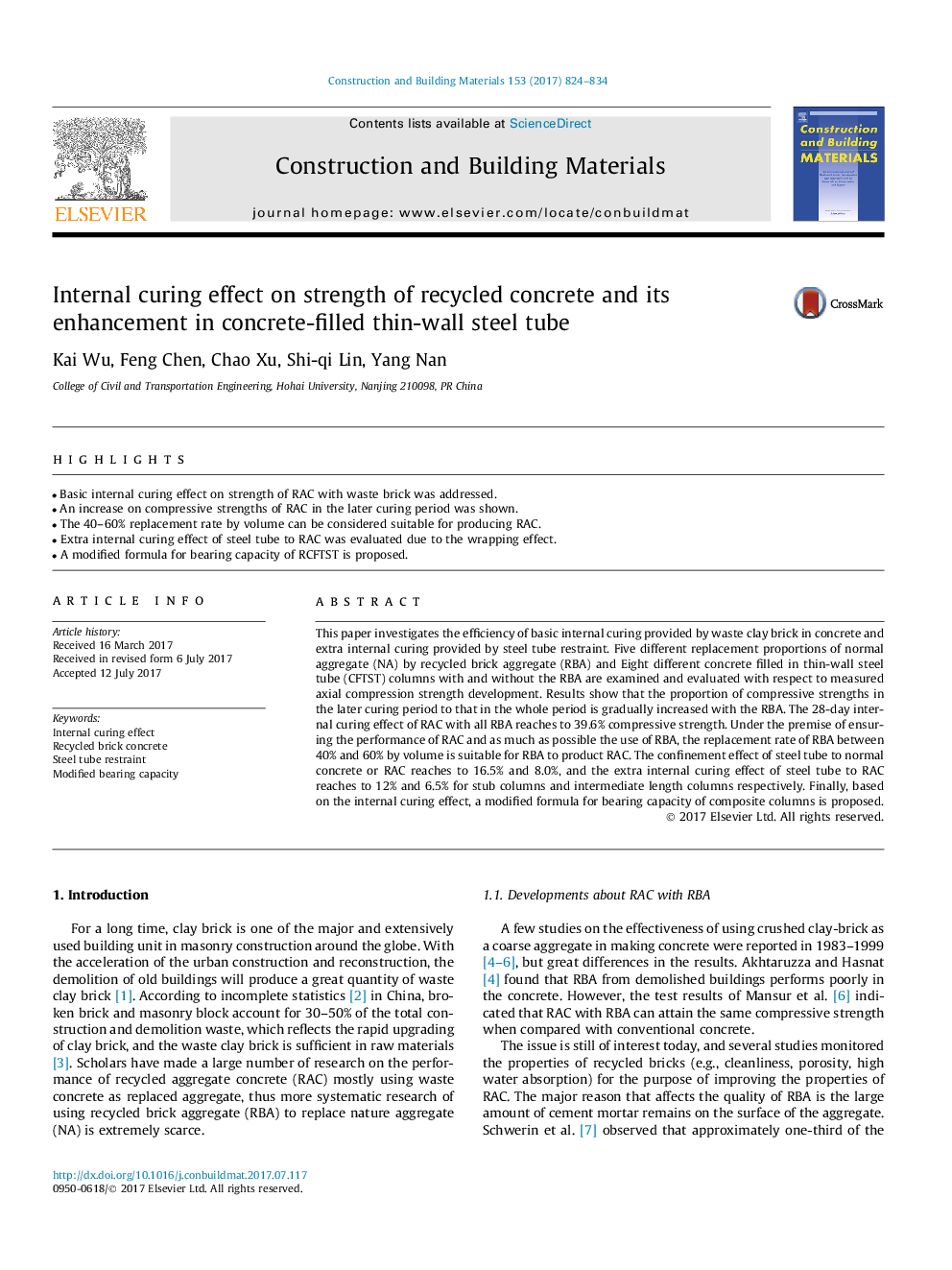| Article ID | Journal | Published Year | Pages | File Type |
|---|---|---|---|---|
| 4913026 | Construction and Building Materials | 2017 | 11 Pages |
Abstract
This paper investigates the efficiency of basic internal curing provided by waste clay brick in concrete and extra internal curing provided by steel tube restraint. Five different replacement proportions of normal aggregate (NA) by recycled brick aggregate (RBA) and Eight different concrete filled in thin-wall steel tube (CFTST) columns with and without the RBA are examined and evaluated with respect to measured axial compression strength development. Results show that the proportion of compressive strengths in the later curing period to that in the whole period is gradually increased with the RBA. The 28-day internal curing effect of RAC with all RBA reaches to 39.6% compressive strength. Under the premise of ensuring the performance of RAC and as much as possible the use of RBA, the replacement rate of RBA between 40% and 60% by volume is suitable for RBA to product RAC. The confinement effect of steel tube to normal concrete or RAC reaches to 16.5% and 8.0%, and the extra internal curing effect of steel tube to RAC reaches to 12% and 6.5% for stub columns and intermediate length columns respectively. Finally, based on the internal curing effect, a modified formula for bearing capacity of composite columns is proposed.
Related Topics
Physical Sciences and Engineering
Engineering
Civil and Structural Engineering
Authors
Kai Wu, Feng Chen, Chao Xu, Shi-qi Lin, Yang Nan,
